
Supernova SN2011k data here.
In photometry we measure a star's light over time, to gain insight on that star's physical activity. We see what we don't otherwise see.
This page presents examples of photometric data from CSM observatory, concentrating on variable stars (there are many types), and asteroids. According to the American Association of Variable Star Observers (AAVSO), there are over 100,000 known variable stars in the Milky Way.
A CCD camera and telescope are used to gather .fits data. Performing differential photometry, we compare the target star with 2 or more non-variable "comparison" stars, to track magnitude changes. 40 images per session are typical. The .csv data is then graphed in Excel. We can determine the time of minimum (ToM) of eclipsing binaries, transit times of extrasolar planets, and rotational periods of asteroids.
Variable star information is found at the AAVSO website. We also use Rolling Hills Observatory for EB targets and Suhora Observatory for ephemerides. Questions & comments welcome here. Also visit our extrasolar planet page here.

Eclipsing Binaries
Eclipsing binary (EB) stars come in many types. We can image only EBs which have an orbital plane within our line of sight. This creates "primary" (smaller component transiting the larger star) and "secondary" (larger component covering the smaller star) eclipses. Brightness changes are recorded (using a CCD camera), and measured in the photometry procedure. Data points are then plotted in Excel.
W Uma is a contact binary 162 light years away in Ursa Major. The data covers about 1.5 hours.
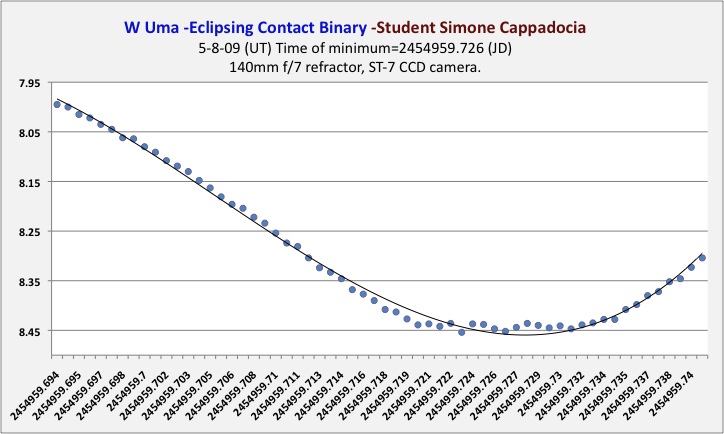
BU Vulpecula is an Algol type star with a period of .56 days. This graph shows the time of minimum (ToM) of primary eclipse on 8-17-10. Data point variations from the trend line are caused by "seeing." The "polynomial" trend line was added in Excel.
BU Vulpecula .csv file here.
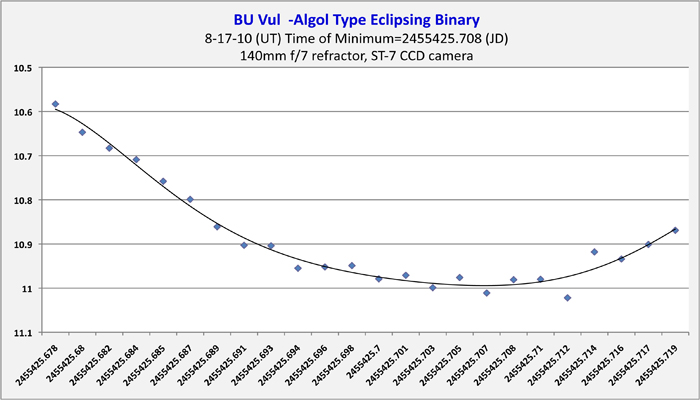
FZ Del is a near contact binary (NCB), FZ Del's components lie a mere 0.1 orbital radius apart and may be in the early stages of mass transfer. See here. Data for this graph was taken by CSM astronomy students Luke Gurry, Stephanie Serrano, and Gregory Chrisman on 9-2-10 (UT) using our 140mm f/7 refractor and ST-7XME camera. "Seeing" was especially steady. Time of Minimum (ToM) = 2455441.75 (JD) Data posted soon.
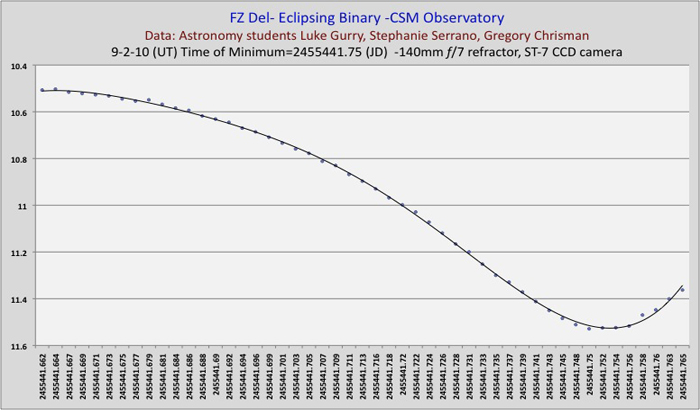
Cataclysmic Variables
Cataclysmic Variable stars (CVs) are binary star systems. A primary (white dwarf) star draws material from a larger companion (donor) star. Rapid changes in brightness occur over short periods, and are measured and graphed.
WZ Sge
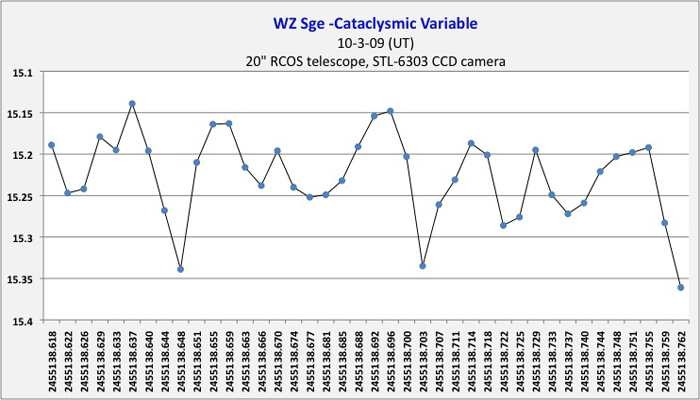
Pulsating Variables
BL Cam is a short period pulsating variable star, with a period under one hour.

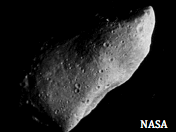
Asteroids